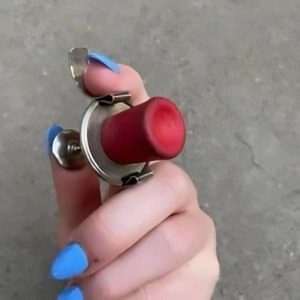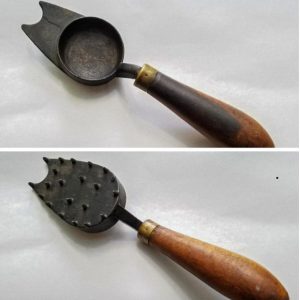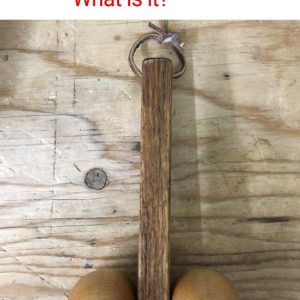Before smartphones buzzed and social media pinged, there was a crackling voice on Channel 19 saying, “Breaker, breaker…” If that rings a bell, you’ve probably experienced the thrill of one of the coolest gadgets of the 20th century: the vintage CB radio (Citizen Band radio).
This wasn’t just a device—it was a culture. A tool. A lifeline. A rolling chatroom long before the internet took over. Let’s take a trip down memory lane and celebrate the golden age of CB radios, a time when conversation flowed through the airwaves and strangers became “good buddies” without ever meeting face to face.

The Birth of the CB Radio: Communication for the People
Back in the 1940s, radios were mostly for listening. Music, news, war reports—broadcasting was a one-way street. But as technology evolved, so did the idea of two-way communication. Enter the Citizen Band radio, introduced by the FCC in 1945 for personal and business use, without the red tape of licensing for amateur radio.
By the 1960s, CB radios became more accessible. What started as a helpful tool for truckers to coordinate deliveries quickly became a platform for everyday people to talk, connect, and build real communities on the air. All you needed was a CB unit, a decent antenna, and a desire to chat.
Video: Watch the video The Best Vintage CB Radios to explore top picks and nostalgic favorites from this classic communication device.
The Explosion of the CB Radio Craze in the 1970s
If you were around in the 1970s, you know—CB radios were everywhere. In trucks, in sedans, in basements, and kitchens. It wasn’t just about communication—it was a full-on cultural movement.
Truckers used them to swap info about road conditions and speed traps. Parents used them to check in on their kids before cell phones existed. Teenagers used them to flirt or set up meetups in a way that felt like a secret club with its own language.
CB lingo exploded into pop culture:
- “10-4” meant message received.
- “Breaker 1-9” signaled someone trying to join a channel.
- “Smokey” was a police officer.
- “Bear trap”? Speed trap.
- “What’s your 20?” meant Where are you?
Suddenly, millions of Americans were fluent in a whole new language—and loving it.
Simple Tech, Big Impact: How CB Radios Worked

What made CB radios magical was how easy they were to use. No contracts, no monthly bills. You picked a channel (most commonly Channel 19 or 9), held down the mic, and started talking. The range wasn’t huge—1 to 5 miles for most—but that was enough to connect neighborhoods, cities, or fellow drivers on the highway.
Operating on 27 MHz frequencies with 40 channels, CBs gave you instant voice connection, no dial-up, no lag. Just you, your voice, and whoever was listening. For long-haul truckers, it was indispensable. For suburban families, it was entertainment. And for teenagers? A lifeline to fun.
Pop Culture Cemented Its Legacy

Hollywood couldn’t resist the CB radio trend. Movies like Smokey and the Bandit and shows like The Dukes of Hazzard turned CB chatter into legend. Country songs with CB references topped charts. Everyone, it seemed, wanted to be part of this underground-yet-mainstream radio movement.
At its peak in the mid-70s, over 15 million CB radios were in use in the U.S. alone. It was an era where communication felt spontaneous and raw—far from today’s polished, filtered digital conversations.
The Beginning of the End: Enter Cell Phones and the Web
By the 1990s, the CB radio’s dominance started to fade. Cell phones became more affordable. Texting took off. The internet ushered in emails, chat rooms, and later social media. Why wait for a reply when you could message someone instantly from anywhere?
The freedom CBs once offered was overshadowed by newer, more portable devices. Radios got quieter. Slang faded. And Channel 19 wasn’t as busy as it used to be.
Still, for many truckers and rural communities, CB radios never completely left. They remained a backup when cell service dropped, or when you just needed a fast, no-fuss way to talk in real-time.
The Resurgence: Nostalgia Meets Functionality
Video: Watch the video The Rarest and Hardest CB Radios to Find to discover the most elusive models in the world of vintage radios.
Everything old becomes new again. And the vintage CB radio is no exception.
Collectors now hunt for rare models, like the Cobra 148 GTL or Midland 77-285. Some restore them, others proudly display them. Meanwhile, modern reproductions blend classic design with today’s technology, bringing back the charm without sacrificing performance.
Hobbyists also breathe life into CB communities—especially during storms or emergencies when regular networks fail. There’s something comforting about hearing a human voice come through static when you need it most.
Fun Throwbacks: Did You Know…?
- In the 1970s, housewives used CB radios to start local networks for chatting and neighborhood watch.
- Some schools had CB clubs, where students learned etiquette, radio science, and even ran mock traffic reports.
- During blackouts or disasters, CB radios became essential tools for relaying messages when phone lines went down.
Why We Still Love CB Radios
Even if you haven’t used one in decades, there’s a good chance you still remember that click-hiss-pop sound when you tuned in. Or the thrill of someone answering your call on an open channel.
CB radios weren’t about likes, follows, or going viral. They were about real-time, real-voice, real-connection—the kind that’s harder to find in our screen-filled world today.
Conclusion: More Than a Gadget—A Slice of Americana

The vintage CB radio wasn’t just a communication device. It was a movement, a lifestyle, and for many, a lifeline. It brought people together across highways and hometowns, in a time when talking wasn’t instant, but it meant something when it happened.
So if you ever had one, used one, or just smiled at the sound of “breaker 1-9,” then you’ve lived through something special. The CB radio was—and still is—a reminder that even simple tools can create powerful connections.


